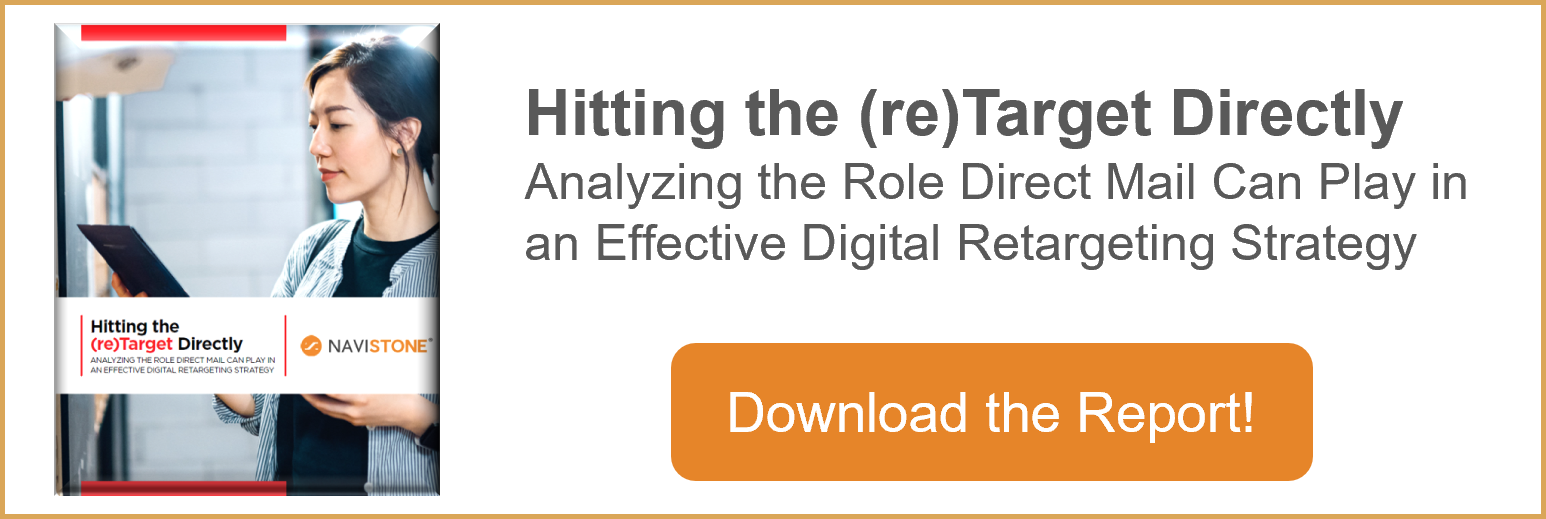
NaviStone CEO, Larry Kavanagh, along with other industry executives was on a recent panel at the ACMA 15th annual National Catalog Forum on June 13th. Check out how Larry addresses the key issues direct marketers are facing today and gives insights into website traffic and pricing trends.
Direct Marketing Q&A with Larry Kavanagh, CEO of NaviStone
Q. What are you seeing with catalog and online response rates in first half 2022?
A. NaviStone’s primary business is helping advertisers remarket to their website visitors using direct mail. As a result, we often look at the year over year change in web traffic by product categories. The chart below compares 2022 to 2021.

There are usually differences between product categories, but they have never been so extreme as what we have seen since the start of the pandemic. Today we are seeing that the categories that had the steepest declines in web traffic during the first year of the pandemic are now showing large increases. Conversely, the types of products that had very large traffic gains early on are now seeing large YoY declines. In all categories, web traffic is up vs 2019, pre-pandemic.
Q. What sorts of concerns and observations do you have about current consumer sentiment and how’s the economic outlook impacting your planning and forecasting? What’s your outlook for holiday? What plans have you begun putting together for 2023, particularly with regard to inventory availability and inbound freight / contract renewals?
A. I think the chart I showed earlier reflects consumer sentiment. People are booking travel and refreshing their closets. Conversely, they are not focused on improving their experience at home and buying food for consumption at home. I don’t see either trend changing for the rest of this year. If there is an overall decline in consumer spending, I expect it will just move the baseline above, lower, and not change where consumers are focusing. As long as we’re not in a recession next year, I expect 2023 to be even to slightly up vs. 2022 for all categories.
Q. How are you monitoring price elasticity? Will you reverse if you see elasticity?
A. The chart below shows the year-over-year changes to average order size by category. AOV can go up for a number of reasons, not just price increases. Nevertheless, I think this gives a general sense of what categories are seeing price increases.

Wellness/Fitness fits what we’ve all seen with companies like Peloton…they address declining consumer demand with price cuts. Home furnishings has already been raising prices because of container/freight skyrocketing costs; inflation is likely adding to that.
Q. What sorts of paper challenges or print delays have you been enduring?
A. I’ve heard directly from four companies that use catalogs that they’ve either had an entire catalog printing cancelled or had to make 50% cuts in marketing spend. They are looking for opportunities to redeploy these marketing dollars somewhere else, since they bought inventory based on a revenue generation plan that didn’t account for these expense cuts. NaviStone has not had issues with getting paper for the postcards we send.
Q. How have your email marketing practices changed?
A. We’ve seen an opportunity that is tangential to email. Over 50% of a company’s best customers never see email promotions, due to either to an active opt-out or a passive one in which all your messages are ignored/go to spam. This means many customers never see the great Black Friday/Cyber Monday offers, or any other of your best emails. We’ve seen great results when companies identify these opt-outs and send a postcard that makes the same offer and it is timed to arrive at about the same time. I think there is a lot of potential to apply the same idea to your best responding triggered emails: use postcards to deliver the message when you can’t do so via email.
Q. What about catalog attribution validation – are you revalidating this, post-COVID? Any thoughts on other ways to do this without expense holdouts?
A. No significant marketing program is 100% incremental. The raw results from all programs have to be reduced by some factor, whether it’s direct mail, a Facebook Ad, or a Google PLA. Once you’ve established what the factor is for a channel, though, there is no reason to have a “permanent” holdout. That’s really where companies are incurring a huge opportunity cost unnecessarily. Attribution also has to go hand-in-hand with measurement of the 12-month subsequent revenue/margin for a channel. We see big differences in subsequent purchase activity from customers acquired with direct mail vs. pure digital.


Lookalike Audiences Enhance customer acquisition by identifying high-potential prospects, boosting response rates, and lowering advertising costs.
Retargeting Postcards Double the performance of your direct mail retargeting.
Amplify Recognize unknown visitors who are actually customers. Add 20-40% to your ESP/CRM campaigns.
IQ Mail Retain customers with personalized, timely messages for those opting out of digital channels.








Comments